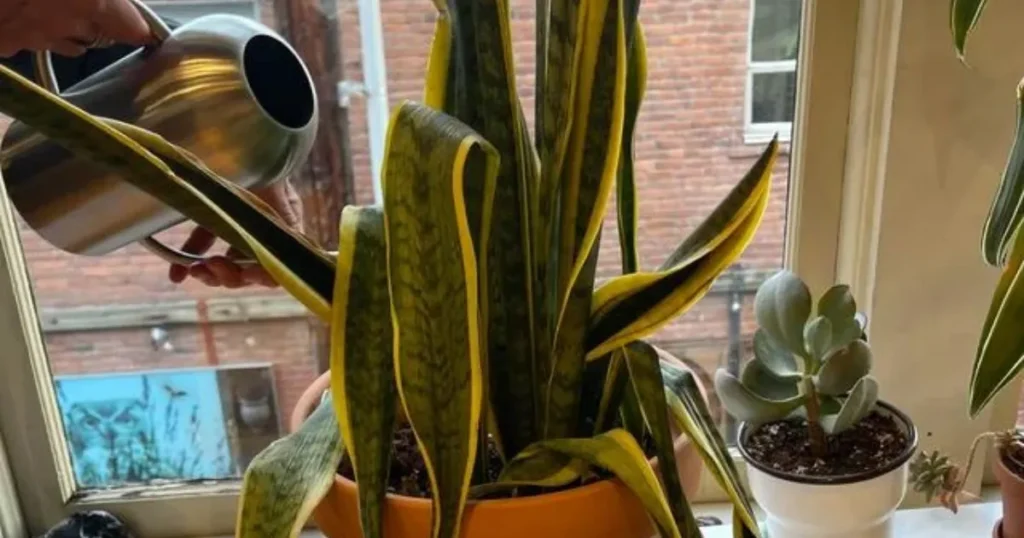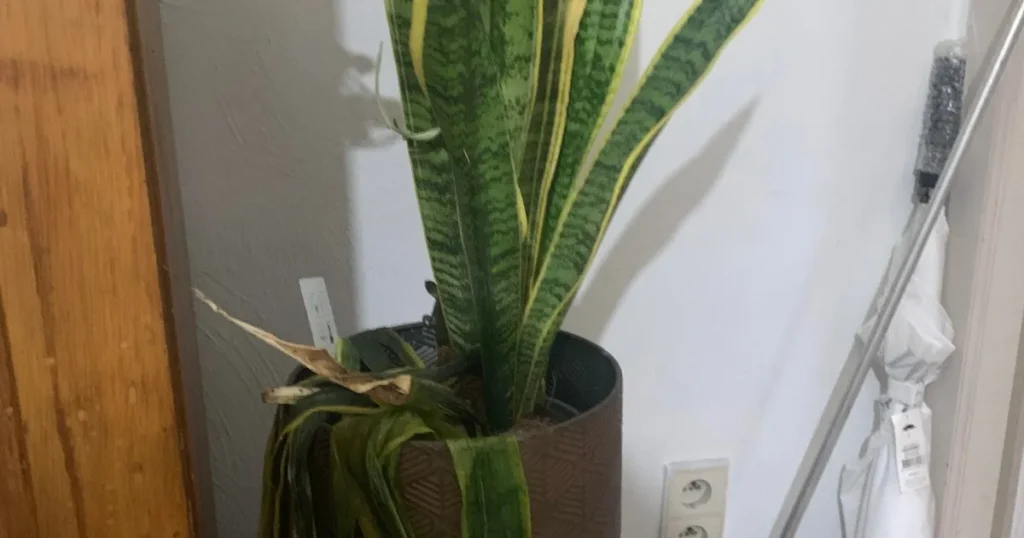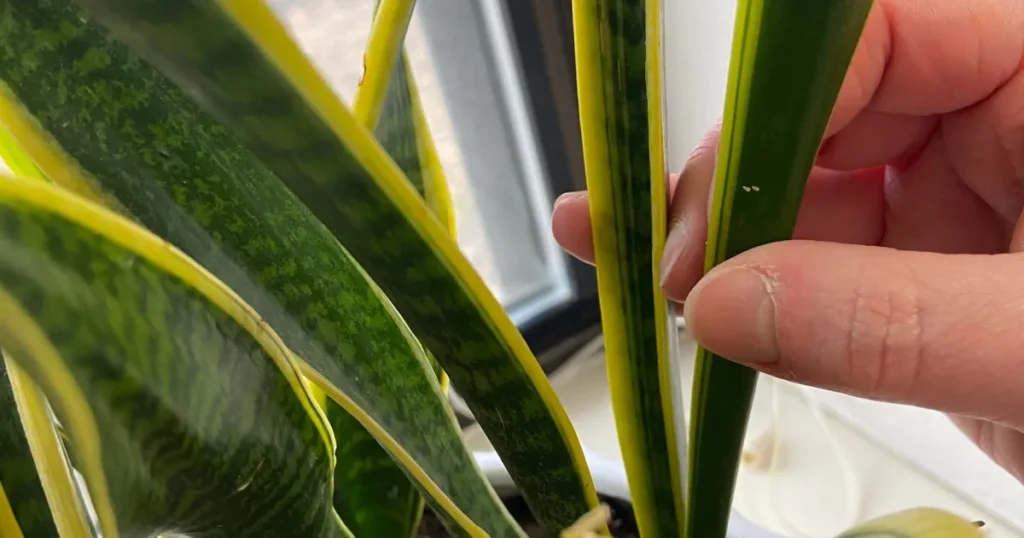Are Snake Plants Easy To Care For? Indeed!

Ever wondered how to make your Snake Plant thrive? These tough, eye-catching plants are a favorite among plant lovers. With their striking upright leaves and low-maintenance nature, Snake Plants can brighten up any room.
How to take care of Snake Plants? Water every 2-3 weeks when soil is dry. Provide bright indirect light. Keep above 50°F. Use well-draining soil. Repot every 2-3 years. Wipe leaves occasionally. Fertilize monthly in the growing season. Avoid overwatering and cold drafts. They’re low-maintenance and tolerate neglect.
Let’s dive in to learn Snake Plant care and uncover the secrets to keeping these green beauties happy and healthy.
Table of Contents
What’s the Deal with Watering Snake Plant?

When it comes to watering your Snake Plant, less is more.
These plants are pros at handling dry spells. Water your Snake Plant every two weeks, or when the top two inches of soil feel dry. Stick your finger into the soil – if it’s still damp, hold off on watering. It’s better to underwater than overwater these hardy and low-maintenance plants.
During winter, cut back on watering even more. Your Snake Plant enters a resting phase and needs less moisture. Remember, soggy soil is a big no-no for these plants. If in doubt, wait an extra day or two before watering.
The following video can help you with watering details for snake plants.
How Much Light Does a Snake Plant Need?

Good news for those with less-than-ideal lighting: Snake Plants are super adaptable. While they prefer bright, indirect light, they can handle a wide range of light conditions. More sunlight is better, but these are tough and low-light plants.
Place your Snake Plant near a window where it can soak up some rays. If you notice the leaves turning pale or yellow, it might be getting too much direct sun. In this case, move it back a bit or add a sheer curtain to filter the light.
What’s the Perfect Temperature for a Snake Plant?

Snake Plants like it warm, just like many of us! Keep your plant in a spot with temperatures above 50°F (10°C). They’re happiest in normal room temperatures between 60-80°F (15-27°C).
Avoid placing your Snake Plant near drafty windows or air conditioning vents. Sudden temperature changes can stress the plant. If you live in a colder climate, keep your Snake Plant away from chilly windowsills during winter.
Does a Snake Plant Need High Humidity?

The good news is that snake Plants aren’t fussy about humidity. They can thrive in the dry air of most homes. No need for fancy humidifiers or pebble trays with these low-maintenance plants.
If you live in an extremely dry climate, you might want to mist your Snake Plant occasionally. But don’t go overboard – too much moisture can lead to fungal problems.
How Do You Pot and Repot a Snake Plant?
When it comes to potting, Snake Plants like it snug. Choose a pot that’s just a bit larger than the plant’s root ball. Make sure the pot has drainage holes to prevent water from sitting at the bottom.
Use a well-draining potting mix made for houseplants. You can add some perlite or coarse sand to improve drainage. When planting, place your Snake Plant at the same depth it was in its previous pot.
Repotting is only needed every 2-3 years, or when you notice roots peeking out of the drainage holes. Spring is the best time to repot. Gently remove the plant from its old pot, shake off excess soil, and place it in a slightly larger pot with fresh potting mix.
What’s the Secret to Keeping Snake Plant Leaves Shiny?

Want your Snake Plant to look its best? Give those leaves some TLC. Wipe the leaves once in a while with a clean, damp cloth. This not only keeps them looking shiny but also helps the plant breathe better by removing dust.
Avoid using Leaf Shine products. These can clog the plant’s pores and do more harm than good. A gentle wipe with plain water is all your Snake Plant needs to stay glossy and gorgeous.
Should You Feed Your Snake Plant?
While Snake Plants aren’t big eaters, they do appreciate a little snack now and then. Feed your plant with a liquid houseplant fertilizer once a month during spring and summer. Dilute the fertilizer to half the recommended strength – Snake Plants prefer a light meal.
Stop fertilizing in fall and winter when the plant’s growth slows down. Too much fertilizer can lead to weak, floppy growth, so it’s better to err on the side of caution.
FAQs
Let’s have a look at the following Q&A. I hope all of this helps you align your understanding of these topics.
Q: Why are my Snake Plant’s leaves turning yellow?
Yellow leaves often signal to overwater. Check the soil moisture and adjust your watering schedule. Yellow leaves can also be a sign of too much direct sunlight.
Q: Can I propagate my Snake Plant?
Yes! Snake Plants are easy to propagate. You can divide the plant during repotting or root leaf cuttings in water or soil.
Q: Are Snake Plants safe for pets?
Snake Plants are mildly toxic to cats and dogs if ingested. It’s best to keep them out of reach of curious pets.
Q: How fast do Snake Plants grow?
Snake Plants are slow growers. With proper care, they might produce 2-4 new leaves per growing season.
Q: Can Snake Plants purify the air?
Yes, Snake Plants are known for their air-purifying qualities. They can help remove toxins like formaldehyde and benzene from the air.
Conclusion
Snake plants are a breath of fresh air for busy plant parents. Their resilience means they tolerate neglect and infrequent watering, making them ideal for forgetful waterers or those with hectic schedules.
With just a touch of sunlight and a drink every now and then, your snake plant will flourish. It will also be adding a touch of architectural elegance to your home for years to come.
So why not liven up your space with some low-maintenance greenery? Happy planting!






